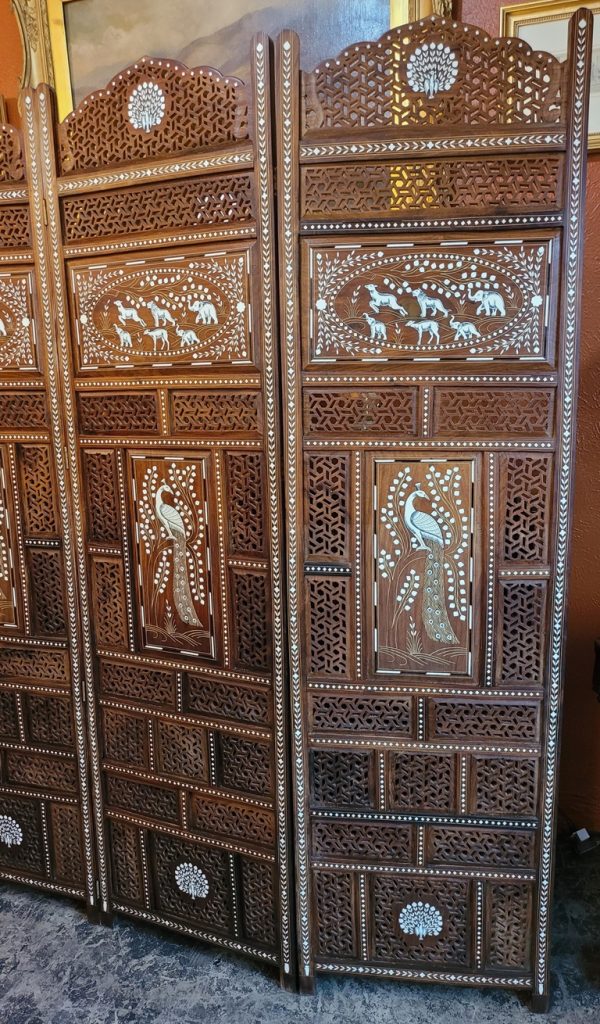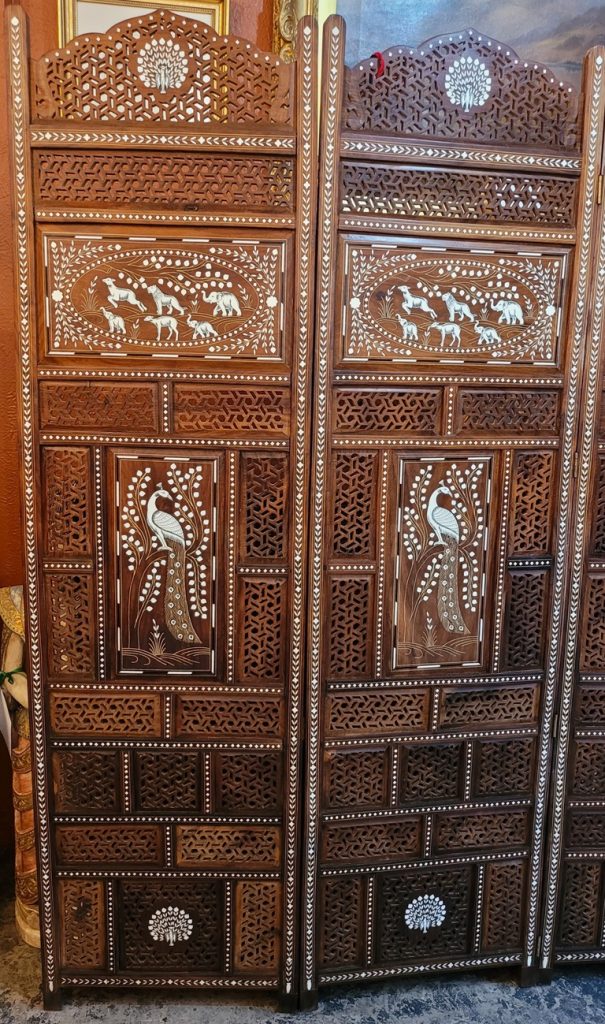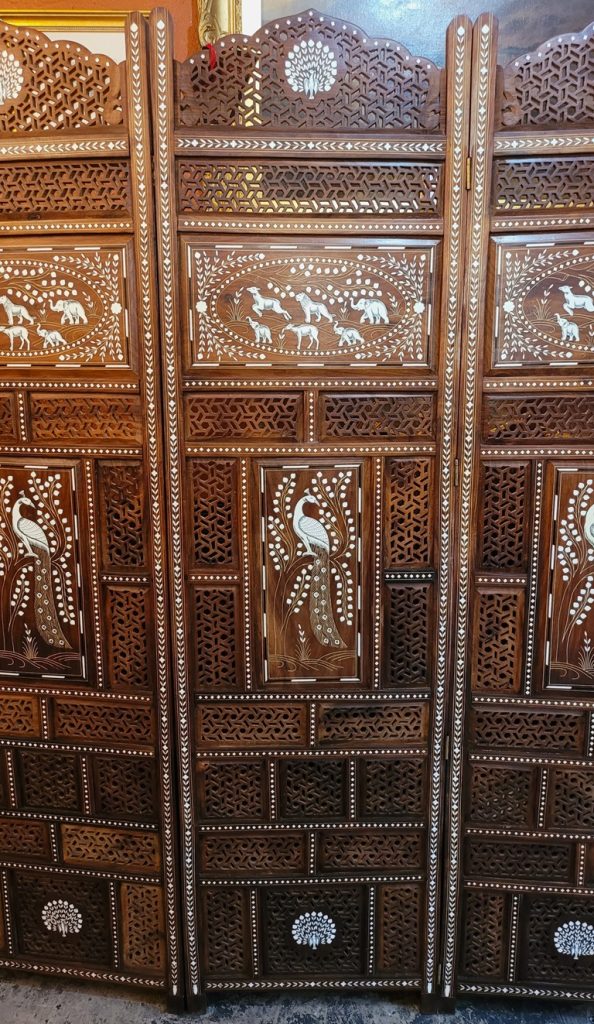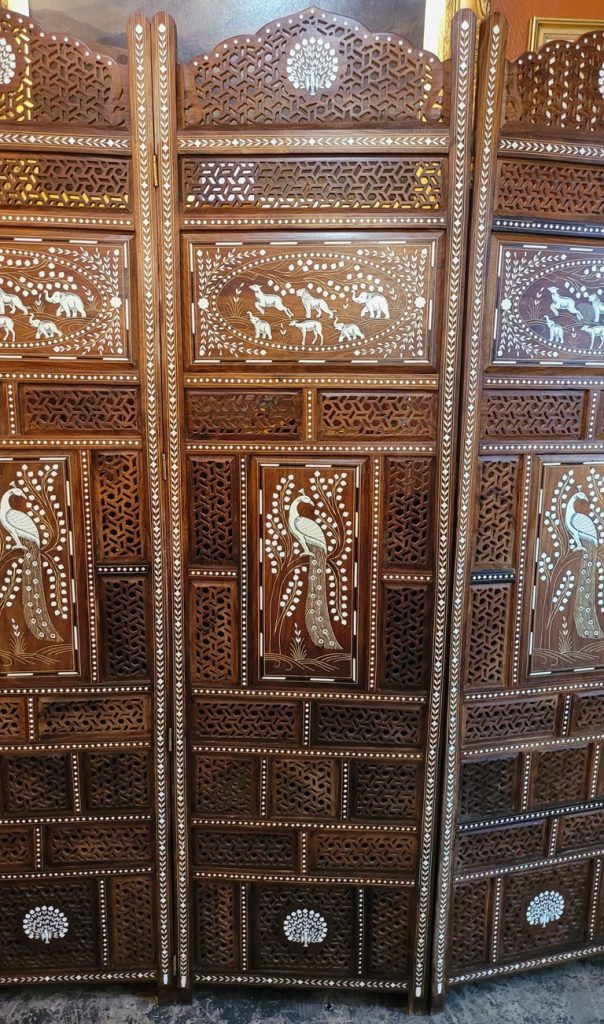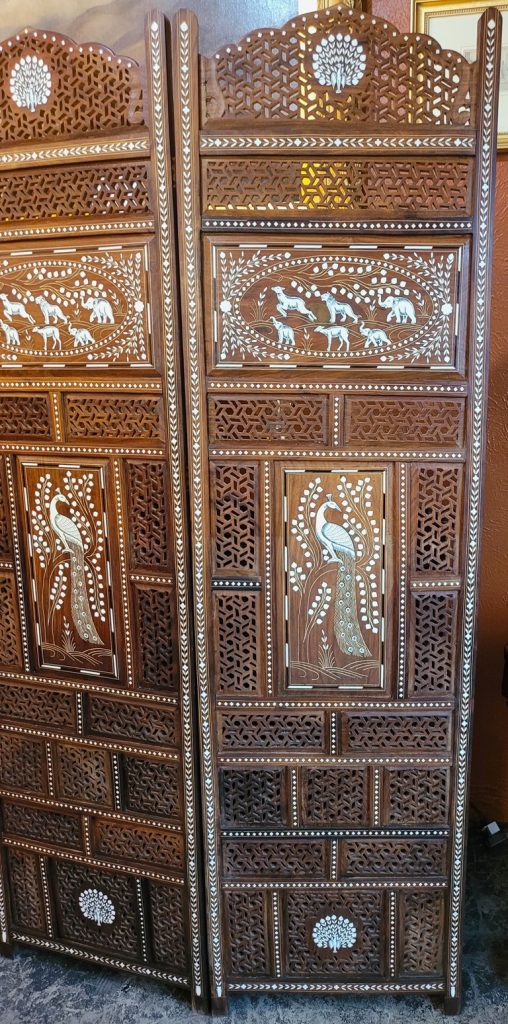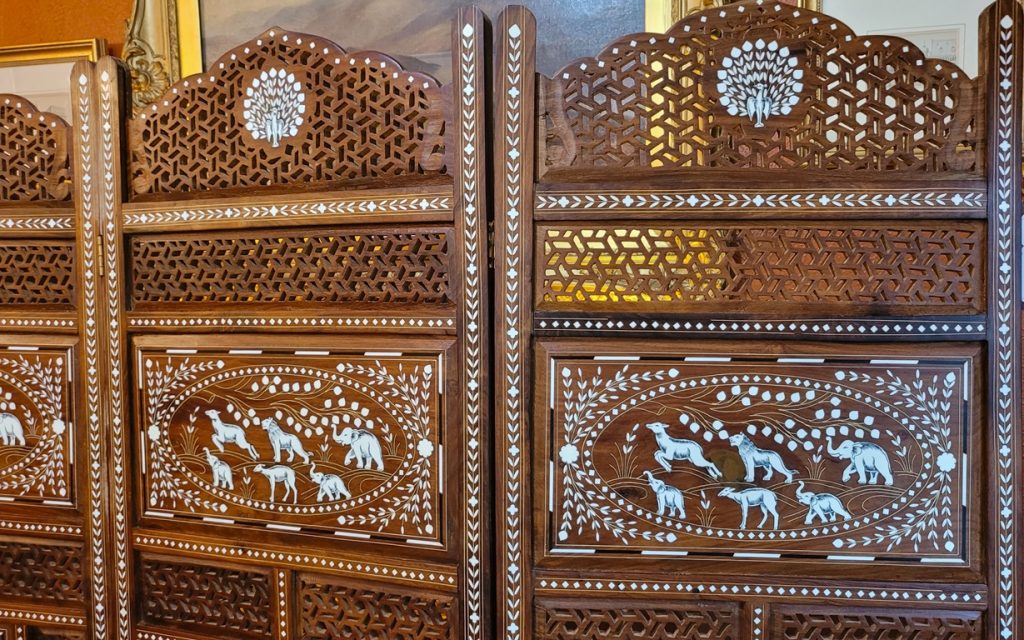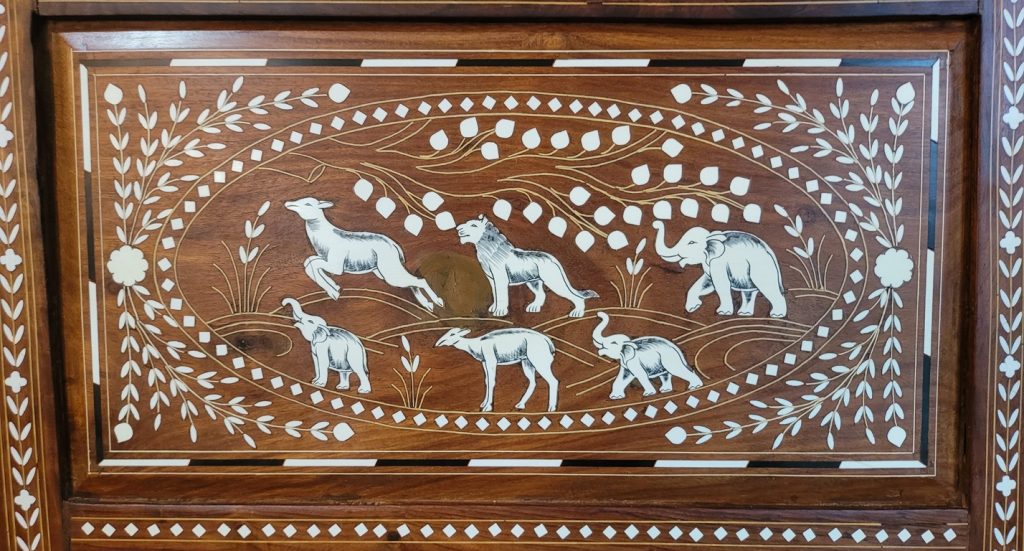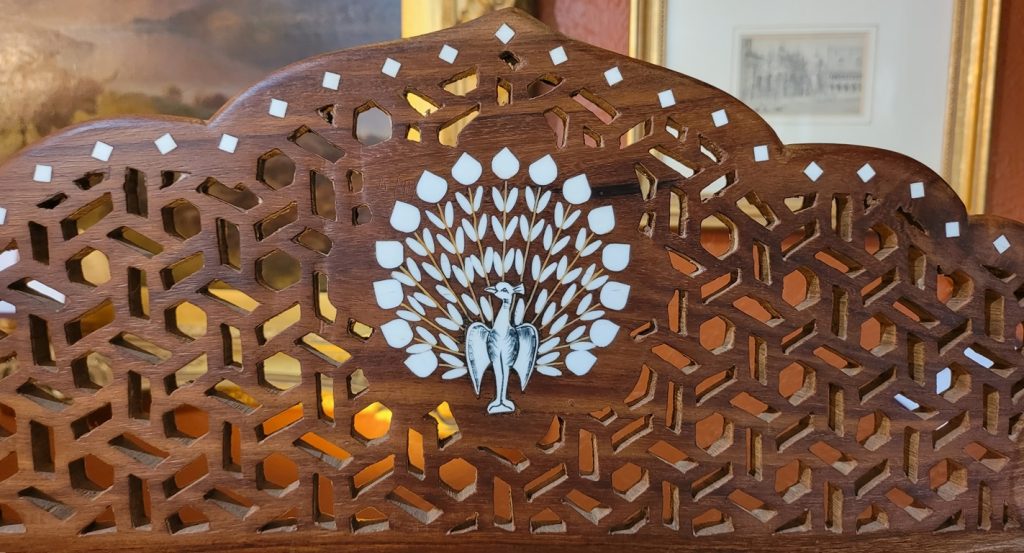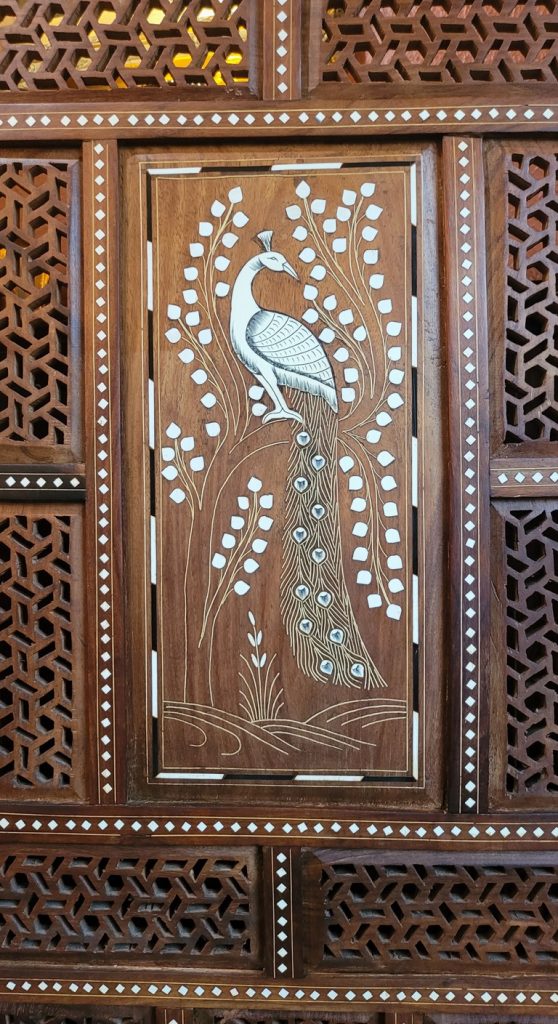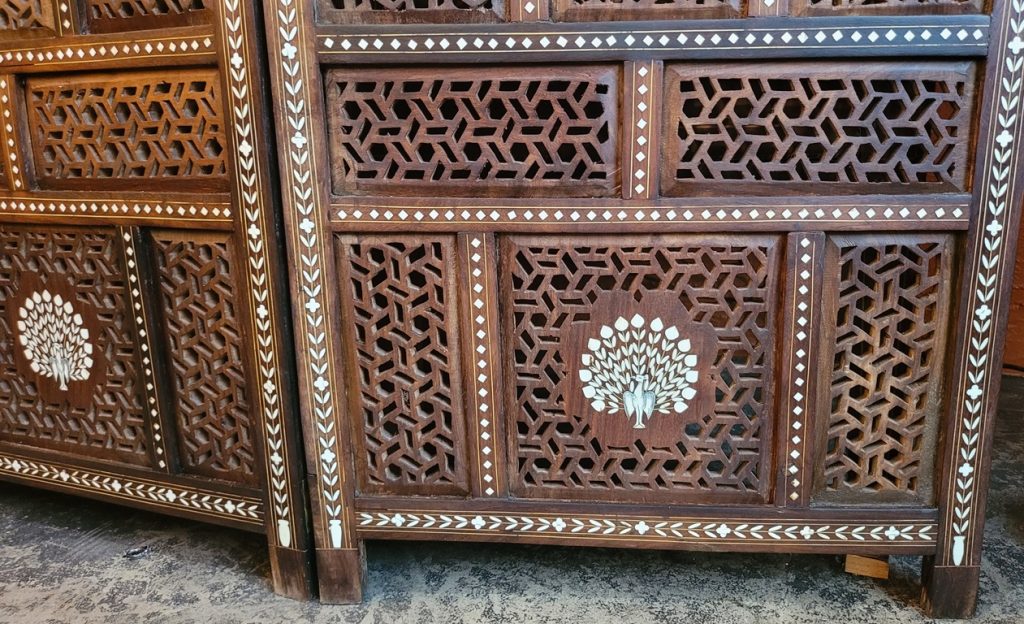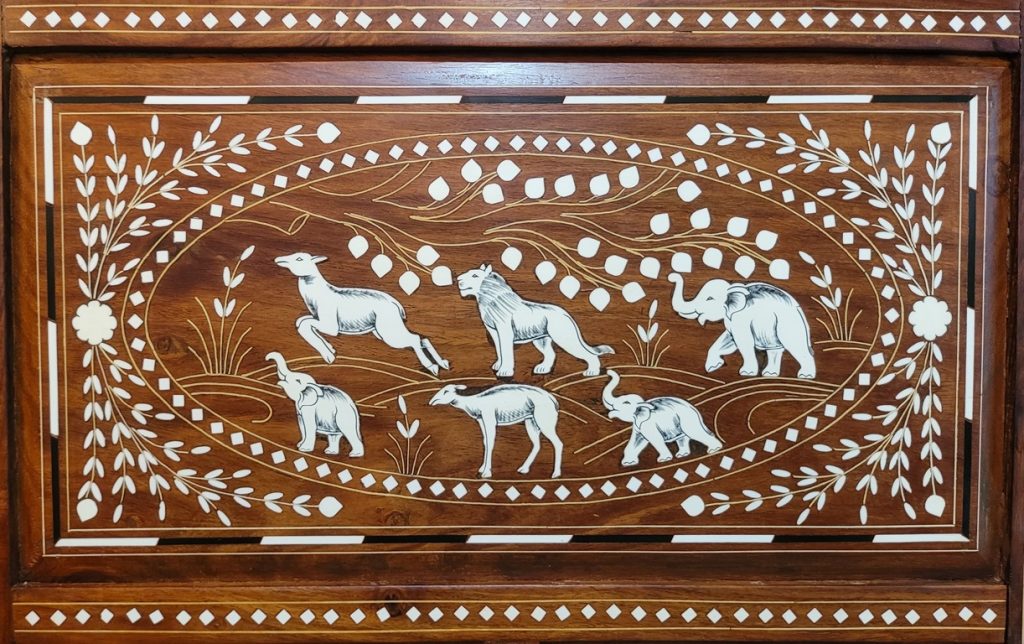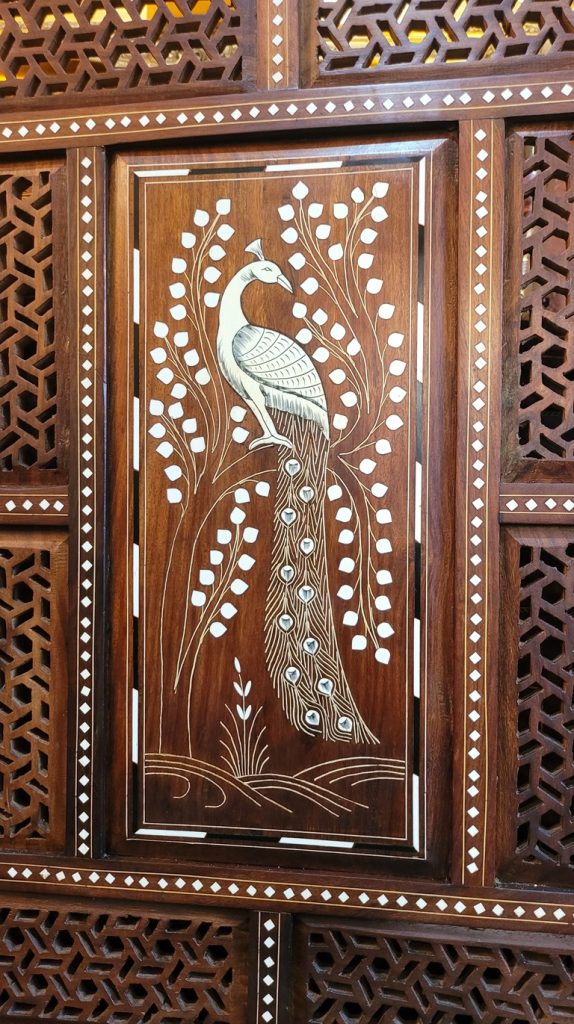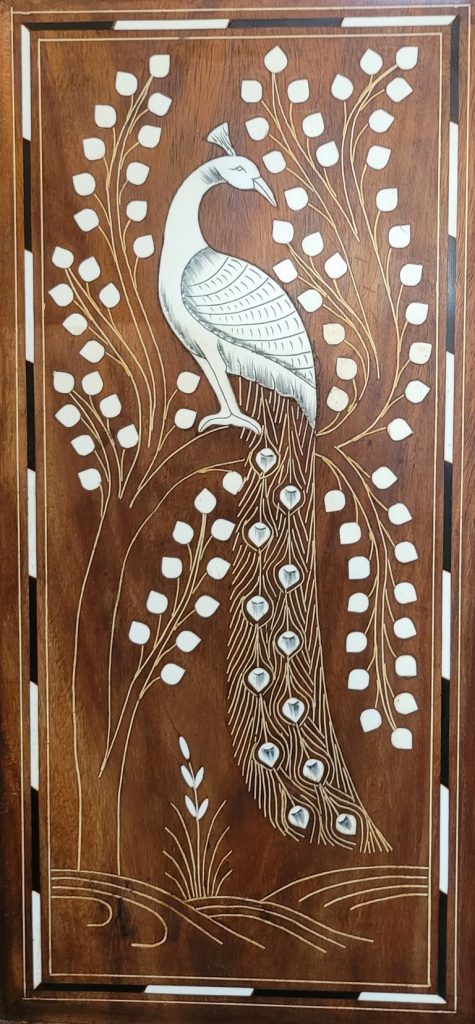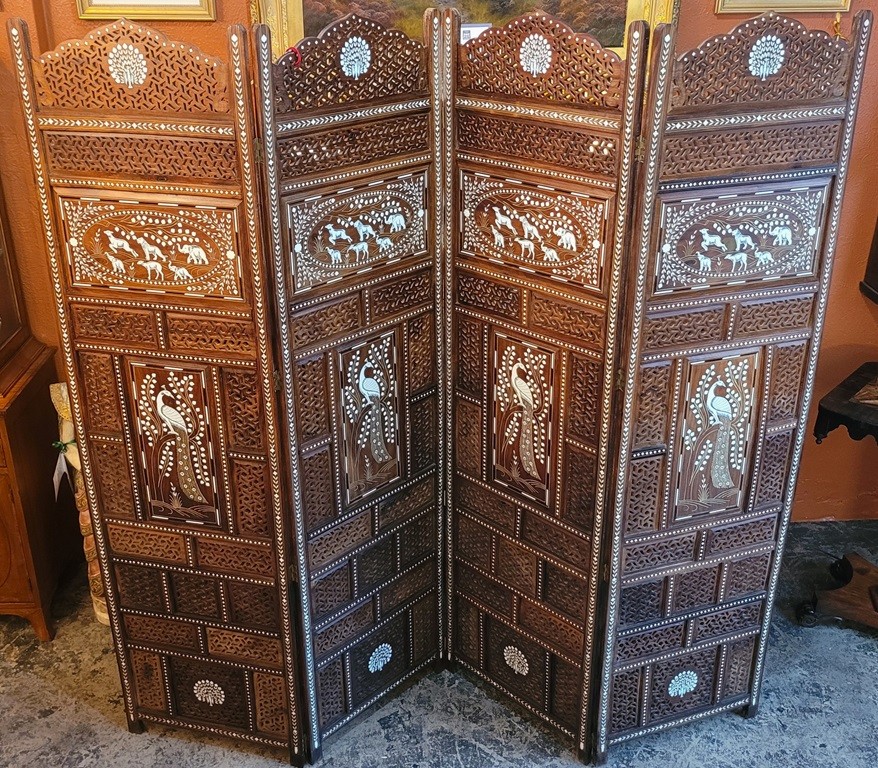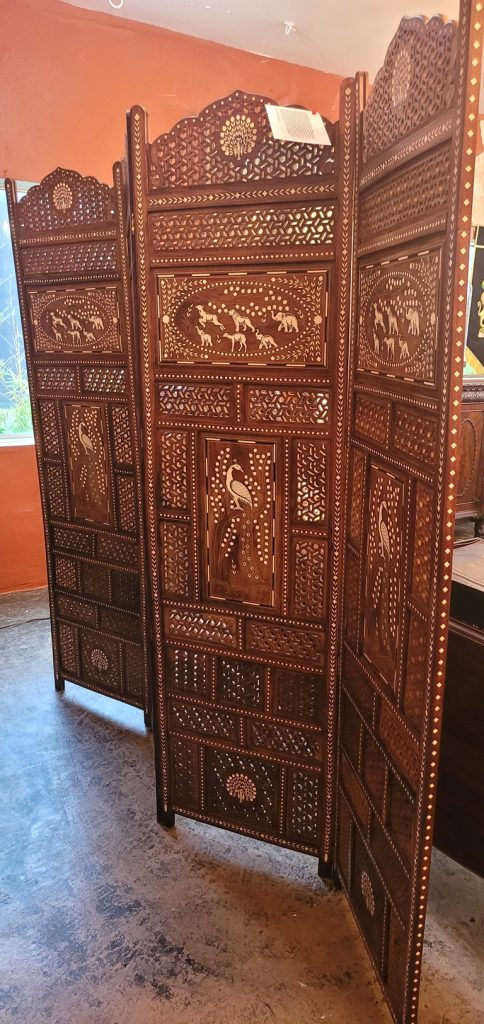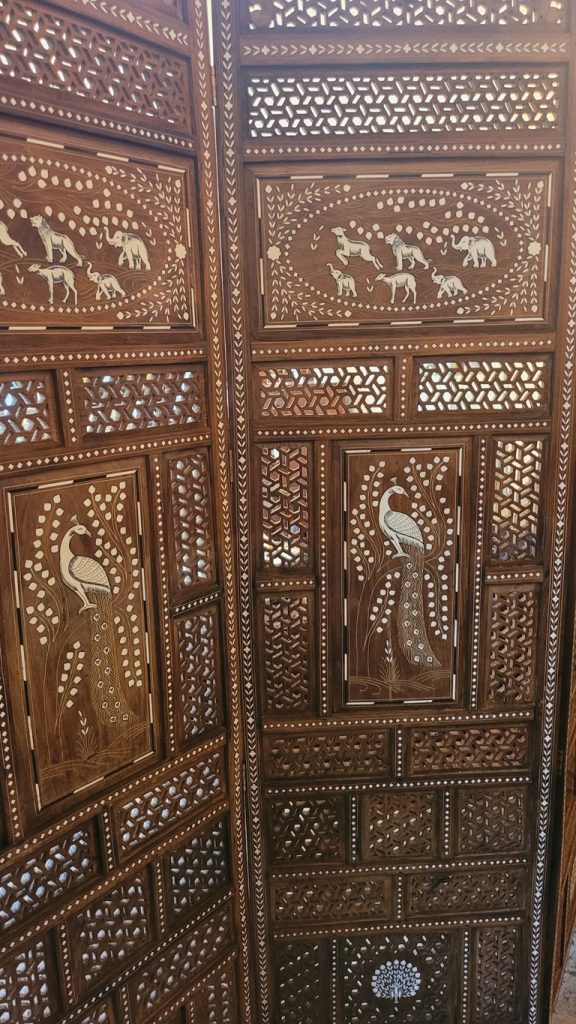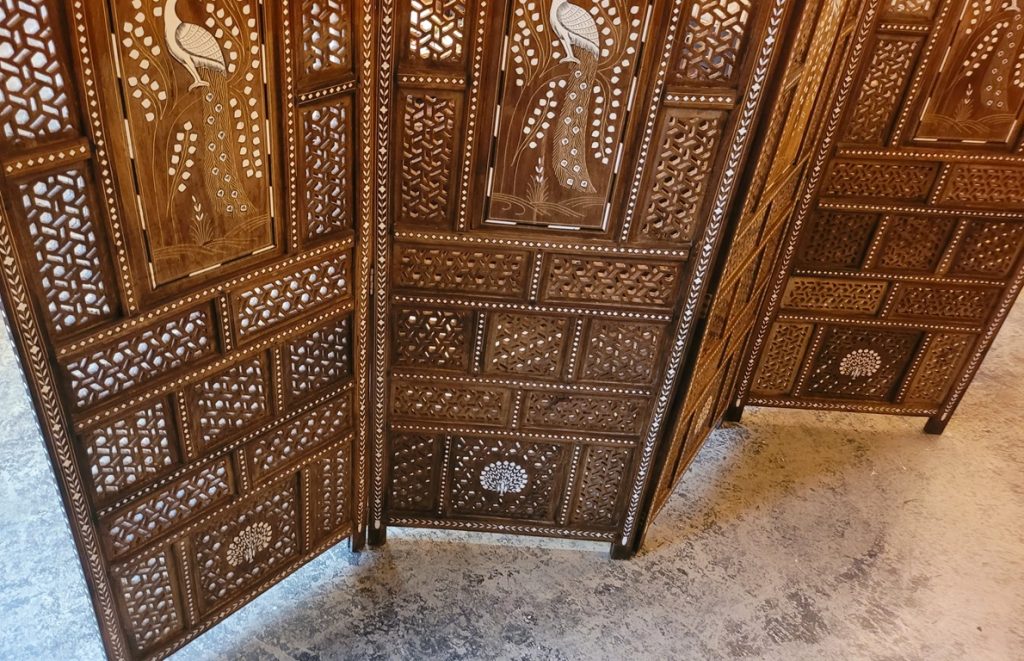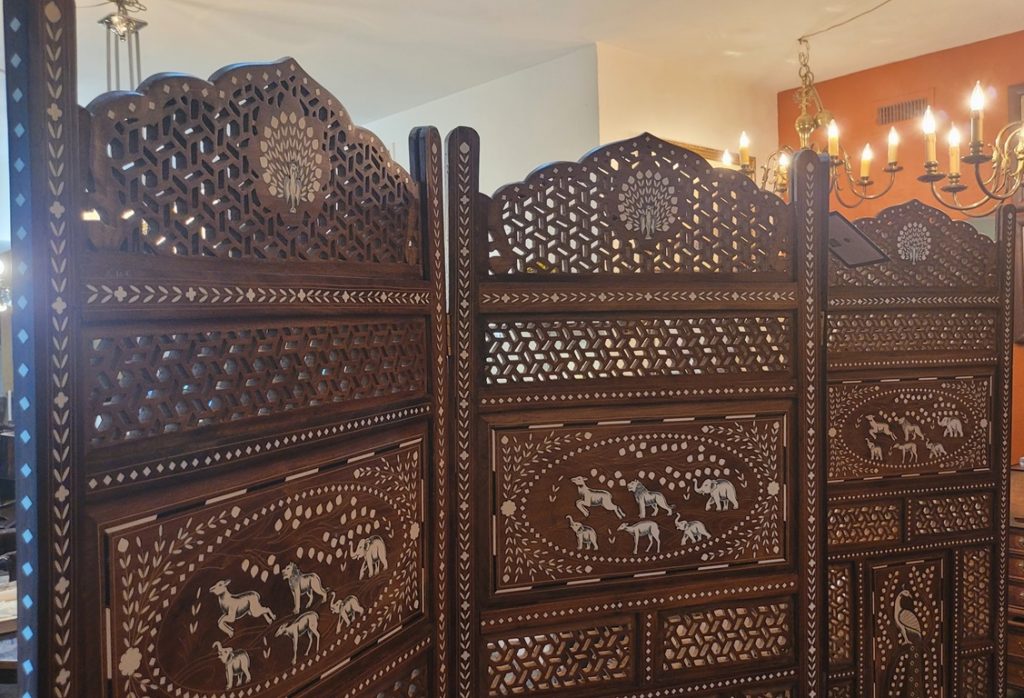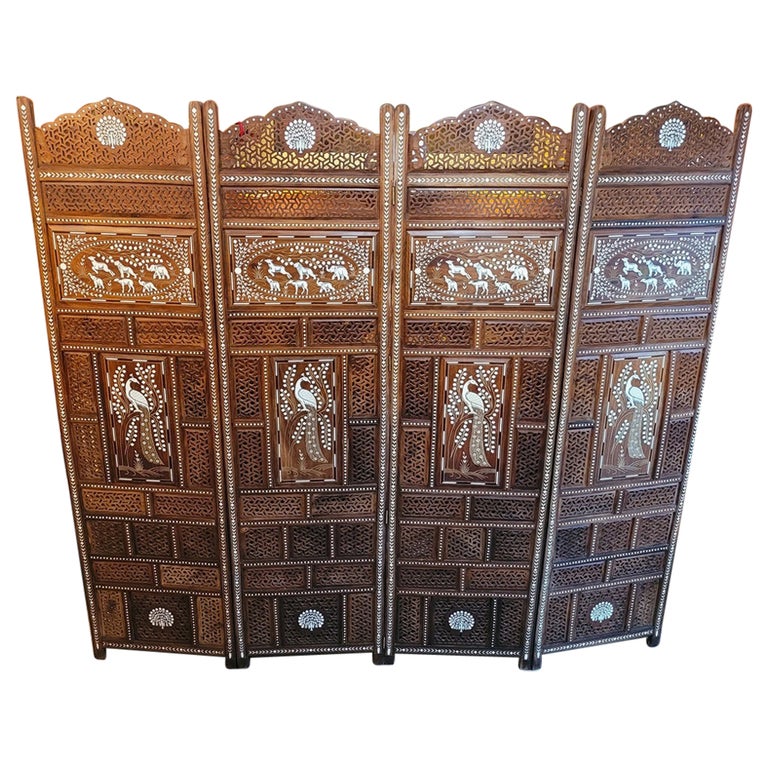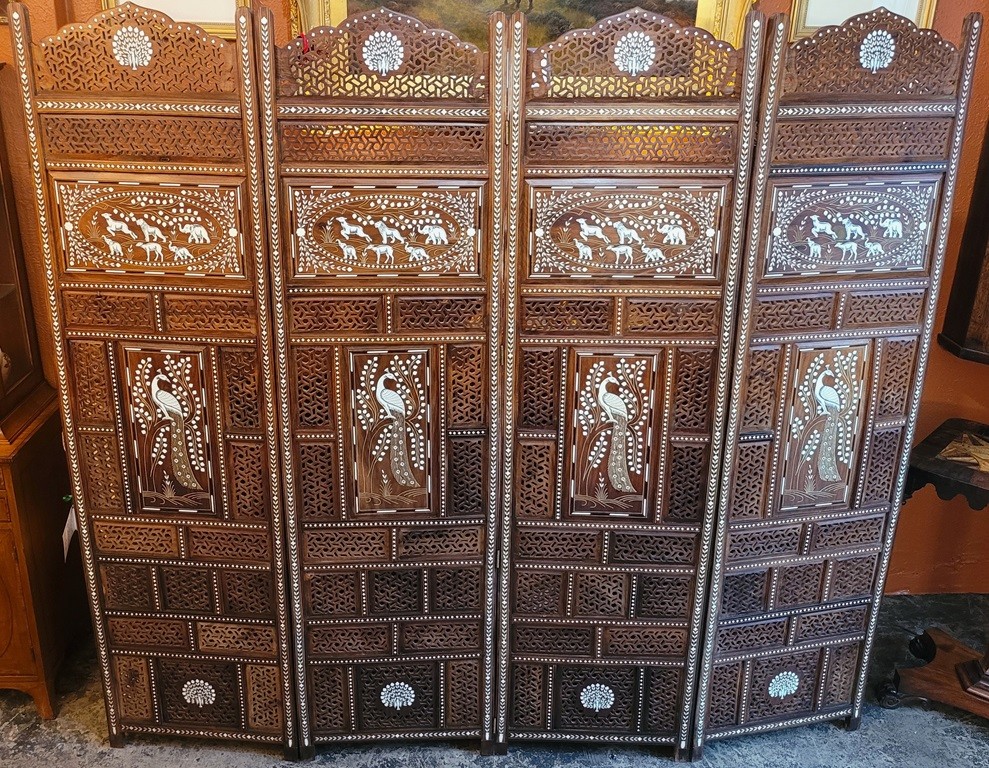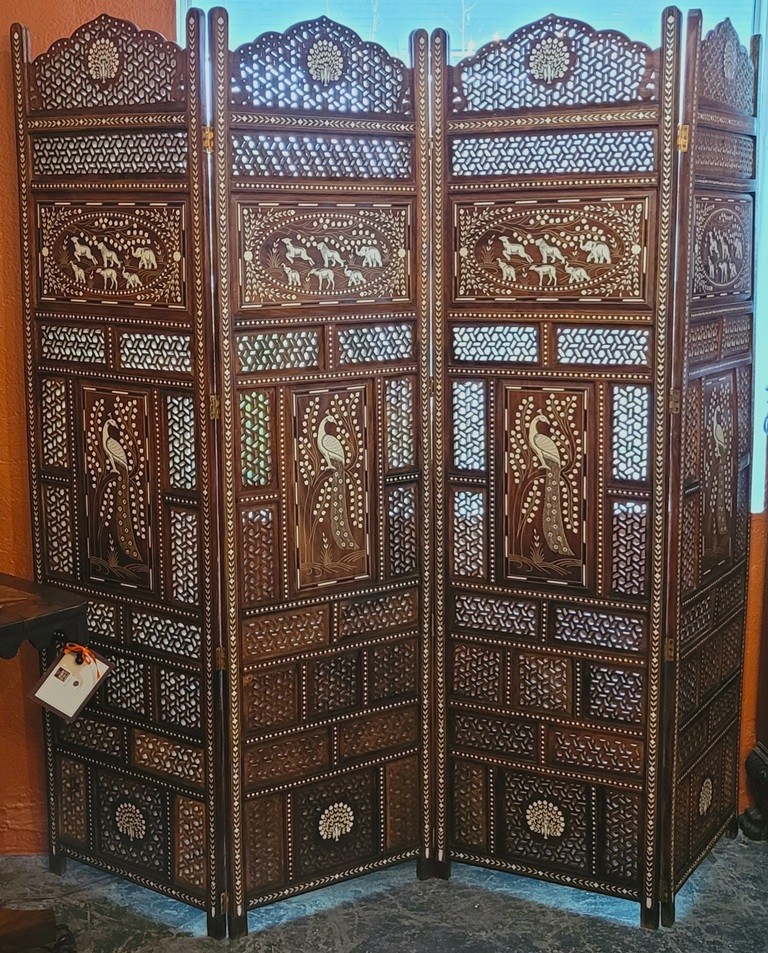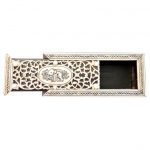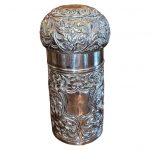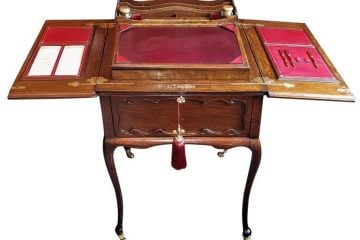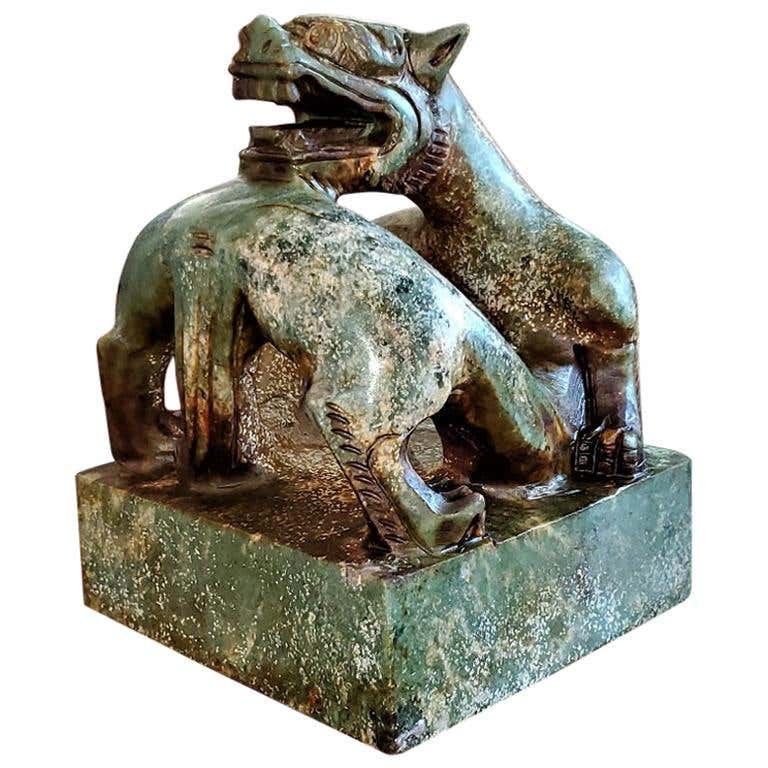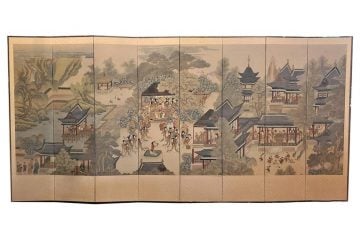20C Anglo Indian Style Double Sided Profusely Inlaid 4 Panel Screen
PRESENTING AN EXCEPTIONAL 20C Anglo Indian Style Double Sided Profusely Inlaid 4 Panel Screen or Room Divider.
Made in Hoshiarpur, India, circa 1960-80.
Made of ‘teak’ wood in the Mughal Style, with pierced frieze panels and profusely inlaid with white plastic (faux ivory), to replicate earlier, ivory inlaid Hoshiarpur craftsmanship.
NOTE: We have tested the inlay and there is no elephant ivory in this piece and therefore it is 100% legal under CITES restrictions. The use of plastic/resin, rather than elephant ivory, tells us that this is a 20th Century piece.
It is a 4 panel, hinged, foldable screen and double sided.
Each panel is of identical construction, design and decoration … front and back.
The crown/top section has an arched and curved, Mughal or Islamic arched style top, a central inlaid faux ivory peacock and pierced frieze surround.
Below this is another pierced frieze panel.
Then it has a solid and profusely inlaid rectangular panel which is edged with faux ivory and ebony chevrons, floral inlay inside that and then an oval inlaid central medallion featuring 3 Elephants, a Lion and 2 Deer.
The lower central section features a rectangular vertical solid panel which is edged with faux ivory and ebony chevrons, then an inlaid central section featuring a ‘fabulous’ Peacock, perched up on a leafy tree branch, with flowing plumes extending downwards.
The base central panel again features a central inlaid faux ivory peacock and pierced frieze surround, to replicate the one on top.
All the side and cross supports (holding the panels in place) are inlaid with faux ivory floral decorations and each side pillar ends with an inlaid ‘urn’.
The inlaid animals ALL have been hand-painted using traditional Indian ‘lac’ ink.
THIS IS A CLASSIC example of the type of furniture that was being made by expert craftsmen in Hoshiarpur, from the early 1700’s .. up to this very day.
Up to Indian independence in the 1950’s, almost all of this furniture, was made for export and specifically for sale to British Military Officers, Diplomats and visiting “Nobility/Gentry’.
WHEN IT COMES TO HOSHIARPUR INLAID FURNITURE … THIS IS AS GOOD AS IT GETS!
“Hoshiarpur in Punjab opens up an awe-inspiring display of Inlay woodworks. An inlay is a technique of engraving various small motifs into hollowed-out spaces of wood to make a uniquely designed pattern on its surface.
The craft has an origin history of 300 years. It is traced back to when Hoshiarpur was the center of ivory bangle making. Small cuts of ivory were discarded during the process of making bangles and combs which were then used by the artisans to adorn small objects by creating beautiful designs.
Since the ban on the use of ivory, artisans have now shifted to using acrylic, plastic, bronze and even camel bones. The wood used for this craft is usually Sheesham wood, known as Tahli in the local lingo. It is extensively used for this craft as it is highly durable and does not get easily attacked by insects. However, nowadays due to the lack of Sheesham wood, Teak and Rosewood are also utilised.
The first step for the inlay work is to get the design ready. Earlier designs were either freestyled or traced using stencils and papers on the wood to be carved. But nowadays computerised prints can also be used for tracing the design. The pattern of the design can be floral, geometrical or traditional motifs. After the design has been traced, it is then etched out with the aid of sharp knives and chisels. Depressions of 2-3 mm are etched out to hold the inlay pieces.
The Inlay pieces are then cut from the material to be used ( acrylic, plastic, bronze, etc). Each piece is then set in the grooves with a hammer and carefully glued into place. The product is then filled off with sandpaper to give a smooth finish and polished to ensure longevity.
The process of making inlay woodworks is a painstakingly intricate one. This traditional artwork requires a lot of perfection, practice and fine manual labor. The endurance of this craft despite the changes and challenges it has undergone owes credit to the tenacity and ingenuity of the artisans of the region.”
Link: https://www.directcreate.com/craft/wooden-inlay-work-hoshiarpur
20C Anglo Indian Style Double Sided Profusely Inlaid 4 Panel Screen
Provenance: From a Quality Houston, TX Estate
Dimensions: Each Panel is 72 inches tall, 20 inches wide and 0.75 inches deep
Fully Opened the Screen is 72 inches tall, 80 inches wide and 0.75 inches deep
Fully Closed the Screen is 72 inches tall, 20 inches wide and 4 inches deep.
Condition: Very good original condition. No losses of inlay to any of the main panels. No missing, broken or cracked frieze panels. Some very slight fading and bowing/warping through age, but not significant.
SALE PRICE NOW: $6,000
